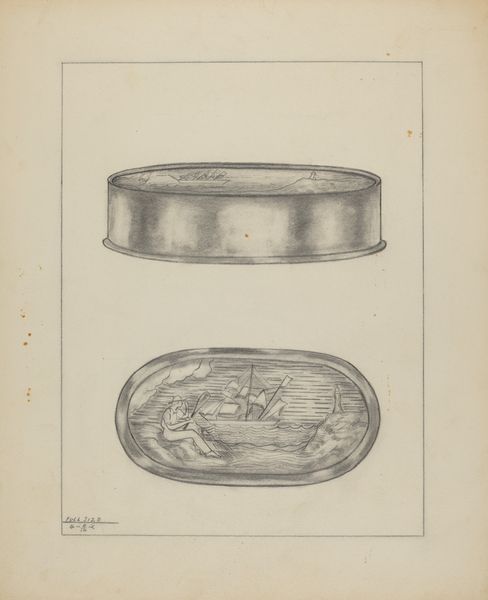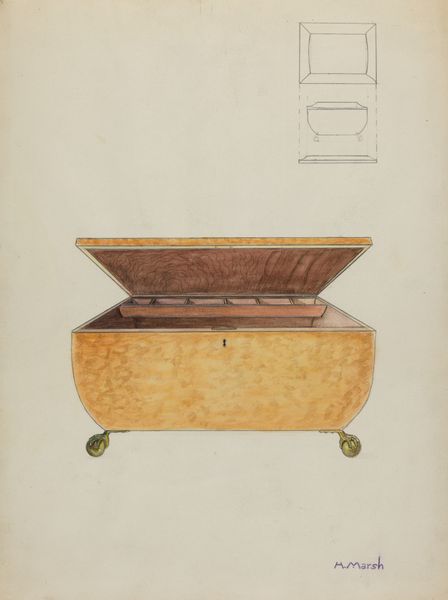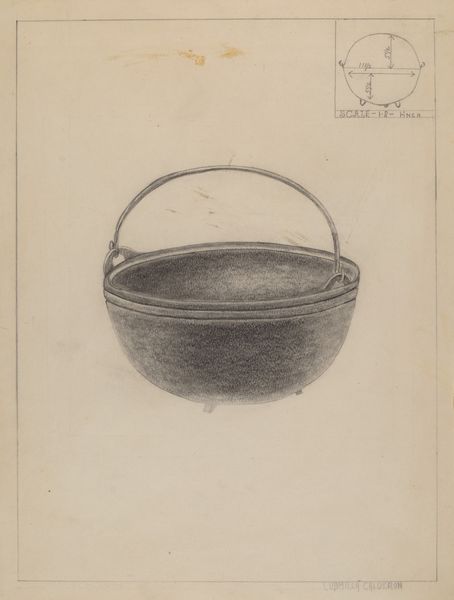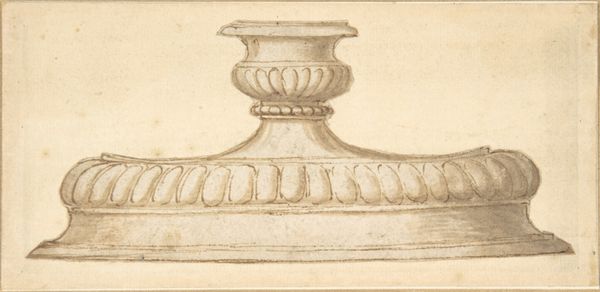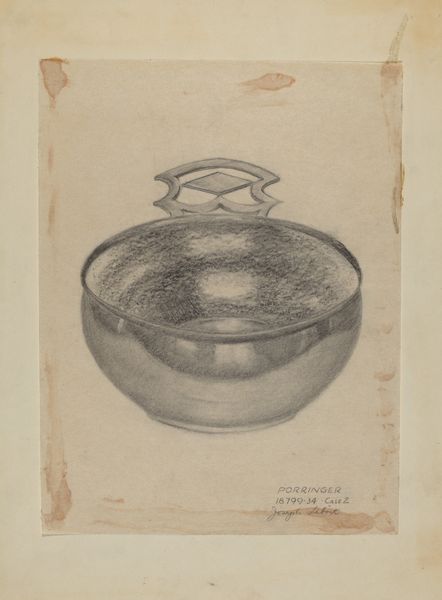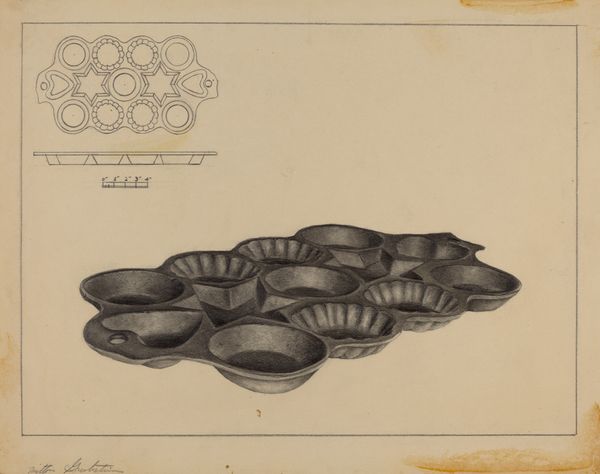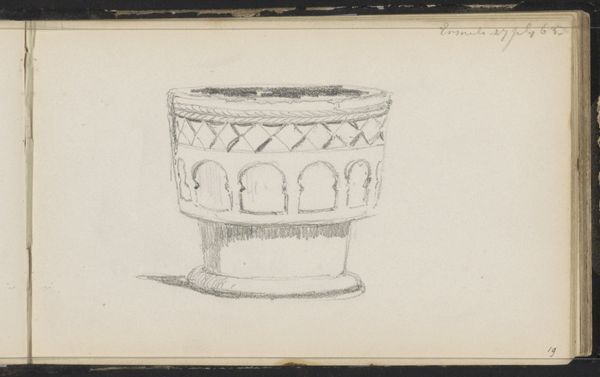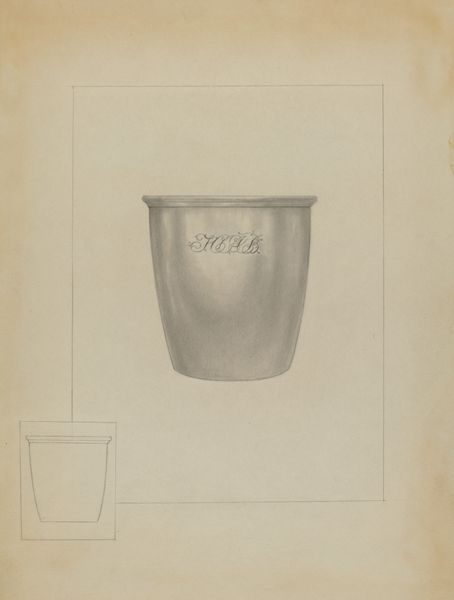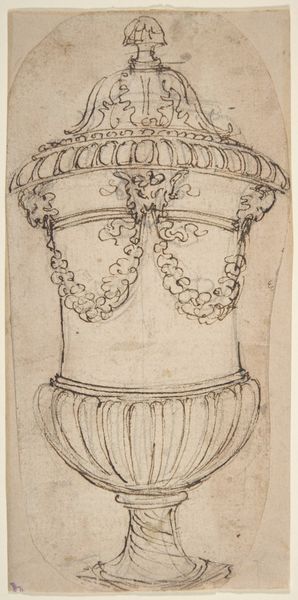
drawing, pencil, architecture
#
drawing
#
neoclacissism
#
etching
#
personal sketchbook
#
geometric
#
pencil
#
architectural drawing
#
architecture
Dimensions: height 220 mm, width 209 mm
Copyright: Rijks Museum: Open Domain
Curator: This drawing, titled "Ontwerp voor twee ovale dekseldozen," or "Design for two oval lidded boxes," comes to us from the hand of Luigi Valadier, likely created between 1760 and 1780. Editor: It's striking in its simplicity. Almost austere, despite the ornamentation it suggests. You can sense the weight of the envisioned metal even in the delicate pencil strokes. Curator: Indeed. And the precision! The evenness of the hatching, the meticulous grid… it speaks to the rigorous training required of artisans at this time. We're seeing here not just a design, but also evidence of labor and skill distilled into a preparatory drawing. These boxes were intended to be crafted from precious materials, certainly destined for elite consumption. Editor: Looking closer, the lids each feature these parallel, vertical marks. It almost feels like a series of stylized flutes. I can almost imagine music box melodies contained within. Do we know anything about their intended purpose? Curator: Their specific function remains a mystery, but luxury items like these were frequently employed for storing sweets, small trinkets, or personal effects. Think of the rituals of display, gift-giving, and the general affirmation of wealth in 18th-century Europe. Editor: And how fascinating to observe these little classical motifs - garlands and egg-and-dart molding – subtly incorporated into their design! I'm interested in how those very ancient signs get reactivated and recontextualized. We often think of Neoclassicism as visually referencing stability. In this drawing the artist conveys its potential with something so humble. Curator: Right. You’re making me reflect on the interesting relationship here, between the fleeting gesture of a sketch and the permanent luxury object it foreshadows. Pencil and paper translating into ornate, gleaming metal... Editor: And it prompts considerations regarding the life-cycle of design and the ways in which the smallest mark contributes to complex stories of cultural and material history. Curator: Exactly! Thank you. It also leaves me thinking of craft labor: How often do we only get to see only the gleaming final product? How seldom do we think about the planning process or labor necessary to reach these stages of manufacturing luxury goods? Editor: Agreed. Now I'm thinking less about precious objects and more about this precious insight!
Comments
No comments
Be the first to comment and join the conversation on the ultimate creative platform.
